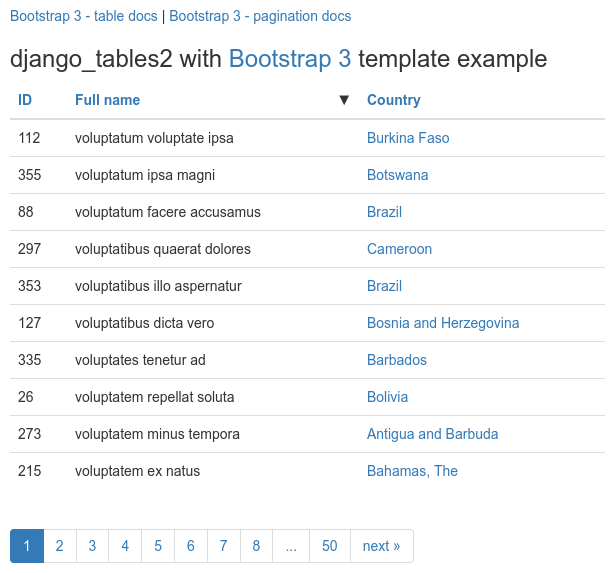| 123456789101112131415161718192021222324252627282930313233343536373839404142434445464748495051525354555657585960616263646566676869707172737475767778798081828384858687888990919293949596979899100101102103104105106107108 |
- Metadata-Version: 2.1
- Name: django-tables2
- Version: 2.4.1
- Summary: Table/data-grid framework for Django
- Home-page: https://github.com/jieter/django-tables2/
- Author: Bradley Ayers
- Author-email: bradley.ayers@gmail.com
- License: Simplified BSD
- Platform: UNKNOWN
- Classifier: Development Status :: 5 - Production/Stable
- Classifier: Environment :: Web Environment
- Classifier: Framework :: Django
- Classifier: Framework :: Django :: 2.2
- Classifier: Framework :: Django :: 3.1
- Classifier: Framework :: Django :: 3.2
- Classifier: Framework :: Django :: 4.0
- Classifier: Intended Audience :: Developers
- Classifier: License :: OSI Approved :: BSD License
- Classifier: Operating System :: OS Independent
- Classifier: Programming Language :: Python
- Classifier: Programming Language :: Python :: 3
- Classifier: Programming Language :: Python :: 3 :: Only
- Classifier: Programming Language :: Python :: 3.5
- Classifier: Programming Language :: Python :: 3.6
- Classifier: Programming Language :: Python :: 3.7
- Classifier: Programming Language :: Python :: 3.8
- Classifier: Programming Language :: Python :: 3.9
- Classifier: Programming Language :: Python :: 3.10
- Classifier: Topic :: Internet :: WWW/HTTP
- Classifier: Topic :: Software Development :: Libraries
- Description-Content-Type: text/markdown
- License-File: LICENSE
- Requires-Dist: Django (>=1.11)
- Provides-Extra: tablib
- Requires-Dist: tablib ; extra == 'tablib'
- # django-tables2 - An app for creating HTML tables
- [](https://pypi.python.org/pypi/django-tables2)
- [](https://github.com/ambv/black)
- django-tables2 simplifies the task of turning sets of data into HTML tables. It
- has native support for pagination and sorting. It does for HTML tables what
- `django.forms` does for HTML forms. e.g.
- - Available on pypi as [django-tables2](https://pypi.python.org/pypi/django-tables2)
- - Tested against currently supported versions of Django
- [and supported python 3 versions Django supports](https://docs.djangoproject.com/en/dev/faq/install/#what-python-version-can-i-use-with-django).
- - [Documentation on readthedocs.org](https://django-tables2.readthedocs.io/en/latest/)
- - [Bug tracker](http://github.com/jieter/django-tables2/issues)
- Features:
- - Any iterable can be a data-source, but special support for Django `QuerySets` is included.
- - The builtin UI does not rely on JavaScript.
- - Support for automatic table generation based on a Django model.
- - Supports custom column functionality via subclassing.
- - Pagination.
- - Column based table sorting.
- - Template tag to enable trivial rendering to HTML.
- - Generic view mixin.
- 
- 
- 
- ## Example
- Start by adding `django_tables2` to your `INSTALLED_APPS` setting like this:
- ```python
- INSTALLED_APPS = (
- ...,
- "django_tables2",
- )
- ```
- Creating a table for a model `Simple` is as simple as:
- ```python
- import django_tables2 as tables
- class SimpleTable(tables.Table):
- class Meta:
- model = Simple
- ```
- This would then be used in a view:
- ```python
- class TableView(tables.SingleTableView):
- table_class = SimpleTable
- queryset = Simple.objects.all()
- template_name = "simple_list.html"
- ```
- And finally in the template:
- ```
- {% load django_tables2 %}
- {% render_table table %}
- ```
- This example shows one of the simplest cases, but django-tables2 can do a lot more!
- Check out the [documentation](https://django-tables2.readthedocs.io/en/latest/) for more details.
|